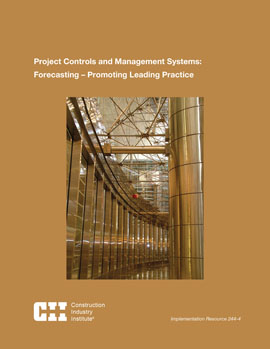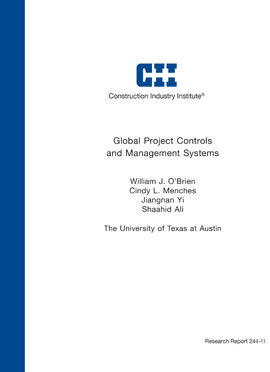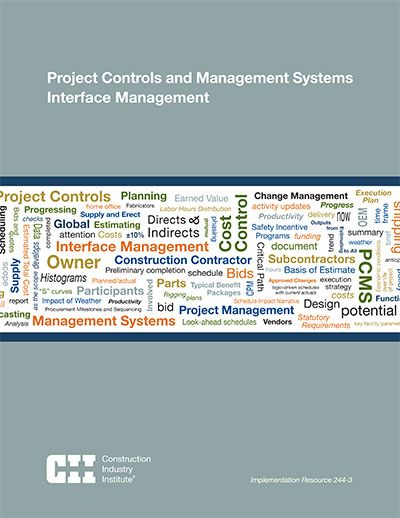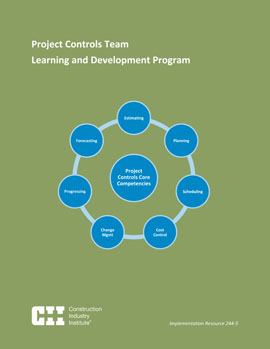
Project Controls and Management Systems: Forecasting -- Promoting Leading Practice
Forecasting is a central activity of project controls and management systems (PCMS) and is a key component of measuring and guiding project health. Many risks throughout the project life cycle influence how quickly and cost-efficiently projects can be designed and completed. Forecasting is one of the processes used to help assess and mitigate possible project risks. Without forecasting, projects have no mechanism for estimating the impact of current progress on future completion and, thus, no basis for corrective action.
Despite the importance of forecasting, CII Research Team (RT) 244, Global Project Controls and Management Systems, found that forecasting practices are often deficient. A broad survey of approximately half of the CII membership revealed that forecasting is one of the weakest project controls functions. (See Research Report 244-11, Global Project Controls and Management Systems, for more detail on the survey.) A more specific survey of project controls professionals (along with interviews) from owner and contractor organizations showed that forecasting is all too often carried out in an ad hoc manner, with limited integration with other PCMS functions. Moreover, implementation of standard procedures is uneven across projects. These findings are consistent with the experience of the RT 244 industry team members.
While there are many reasons for poor forecasting practice, one of the main causes may be the limited educational resources available on forecasting. In many textbooks and manuals, education about forecasting starts and stops with a presentation of earned value and elementary trending calculations. Company procedures are scattered across various manuals and tools/templates, and they lack an integrated focus on the practice of forecasting. To address this problem, RT 244 created this document to concentrate fundamental knowledge about forecasting in a single place. This effort involved providing context on the reasons for forecasting, presenting basic metrics and methods, discussing the risks and challenges of effective forecasting, and making recommendations for assessment and improvement. This resource is not meant to replace textbooks and corporate manuals, but rather to complement them in the hope of improving both forecasting education and practice.
The intended audiences for this document are the following:
- less experienced practitioners, for whom it will serve as a primer, as well as introduction to good practice
- students and educators who want a review of forecasting
- experienced practitioners who want an update and review of good practice, with implementation guidelines and recommendations for assessment.
Contains a set of recommendations and an assessment tool to improve forecasting practice. As forecasting is seen as a consistent area of weakness, this IR serves as a primer for effective forecasting.



